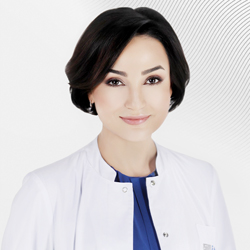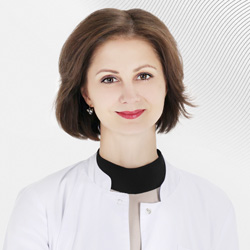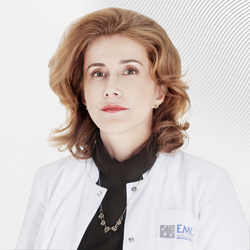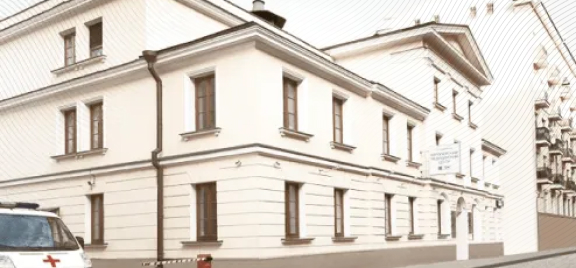Ovarian tumours can be benign, malignant and borderline. Usually benign tumours have no tendency to change into malignant ones, but they may cause pain and torsion of ovarian vessels, in some cases they show no symptoms. Malignant tumours very often grow aggressively, have fast progress and metastasize. They demand combination therapy – radical surgery and chemotherapy before and (or) after surgery. Borderline tumours take a very special place among all neoplasms, the term itself describes the core of disease very well, they have some both benign and malignant features at the same time. Technically they can‘t be defined as benign tumours and often have tumour recurrence after conservative operation, but are not malignant and don’t need chemotherapy. Borderline tumours are insidious and often hit young women of 30-45 years old who have not yet realized their reproductive function.
Frequently borderline tumours don’t show any specific symptoms, that makes them difficult to diagnose. As a rule, they are firstly diagnosed in histological microscopic examination after supposedly benign ovarian cystectomy. If the cyst is supposed to be malignant, it’s always needed to microscope cyst material cito during operation, and if it’s found to be malignant, so oncogynecologist is called to the operation room to perform laparoscopic omentectomy and additional biopsy. Such tactic allows patients to avoid another surgery and narcosis.
Facts and risks
About 10% of borderline tumours transform into malignant at relapse. This means that tumour considered borderline by histological examination, in some time comes back but this time as a malignant one. Unfortunately, even the most up-to-date diagnostic technologies, such as ultrasound, MRI, CT, oncomarkers, can’t diagnose “borderline tumour” by 100% before surgery. Borderline tumours may look like benign as well as malignant, and only intraoperational or after-operational histological examination can identify the tumour. Also there are no specific symptoms to diagnose ovarian tumour, unless the tumour is very big and put pressure on organs around it, but that happens very seldom.
Surgery in EMC
Realizing that one of ten patients will die of borderline tumour relapse practitioners are very cautious to every case of this disease. Young women should be operated on conservatively in order to preserve their hormonal function and ability to give birth . Such treatment doesn’t exacerbate the prognosis for life, but have higher risk of relapse – up to 40-50%. Such relapses require repetitive and not a single operation. But predominantly, even though it’s necessary to expand tissues removal, such interventions should be made in laparoscopic mode as it’s a world standard nowadays, and we follow this in European Medical Center. Unfortunately, this can’t be said about the majority of oncology clinics in Russia, where laparoscopic surgery is not used in such cases. Abdominal surgery for borderline ovarian tumours must be an exception rather than the rule.
If a patient hasn’t been pregnant and given a birth, practitioners in EMC recommend conservative surgery. And even though there have been a relapse of a tumour laparoscopic operations are needed, usually it is possible to save a part of ovary for the following stimulation of ovulation by an expert in In Vitro Fertilization. We can keep the oocytes in cryo-conservation for the following fertilization before possible second or third relapse that may need total ovarian removal. In this way, the uterus in young women is left intact even in the expanded forms of borderline tumours. Such women can get pregnant in just a few months after the surgery and have the biological child.
Frequent mistakes
Many clinics in Russia offer chemotherapy after surgery in borderline tumours treatment. This is ultimately a wrong way, as such tumours actually don’t respond to chemotherapy. The only thing women get is just toxic effect and the following neuropathy (paraesthesia in hands and feet, loss of hearing, etc.) and bone marrow failure. Also it is proved that chemotherapy doesn’t decrease chance of the relapse, so all is needed for correct treatment is to make histologic examination of the suspected ovary tumour during surgery, and if a borderline tumour is diagnosed, necessary laparoscopic manipulations can be done to classify the stage and exclude tumour expansion outside the ovary.
In EMC we don’t suggest our patients, who have borderline tumours, to have chemotherapy, and we don’t provide radical operations to remove both ovaries, uteri adnexa and uterus if a woman is young and has well-working ovaries.

 Write to WhatsApp
Write to WhatsApp













